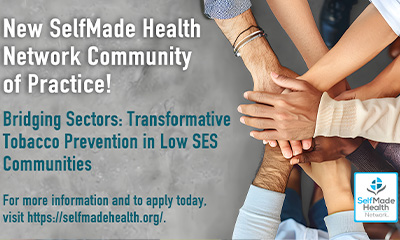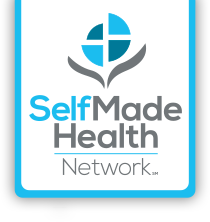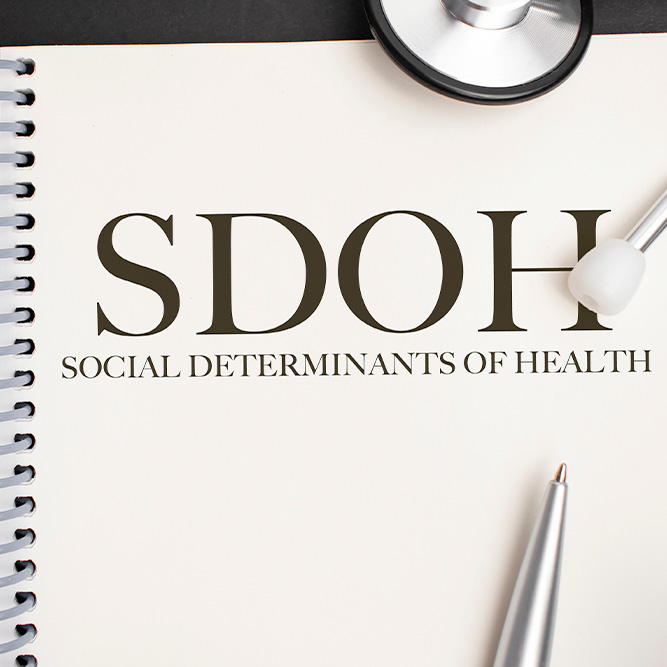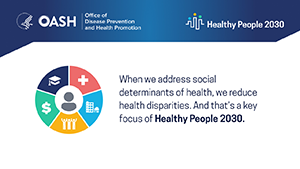Bridging Sectors: Transformative Tobacco Prevention in Low SES Communities

Bridging Sectors: Transformative Tobacco Prevention in Low SES Communities (Bridging Sectors), a SelfMade Health Network (SMHN) Community of Practice (CoP) is more than a virtual collaborative learning space, it’s an initiative dedicated to addressing the complex and interconnected challenges faced by communities with low socioeconomic status (SES) characteristics that exacerbate the impact of commercial tobacco use. Bridging Sectors unites traditional partners like National and State Tobacco Control Programs (NTCP), tobacco prevention coalitions, and community-based organizations while uniquely engaging non-public health sectors such as social services and industry. Together, we aim to create sustainable tobacco control efforts that promote healthier and safer conditions for communities with low socioeconomic status (SES) characteristics by integrating perspectives from sectors outside traditional public health agencies, developing a richer approach to tackling commercial tobacco use in these communities.
At the core of this initiative is a deep commitment to understanding and safeguarding the quality of life for individuals with low socioeconomic status characteristics who use tobacco or are exposed to the harmful effects of second/thirdhand smoke. We recognize that housing environments, access to quality healthcare, and insurance status are intricately connected to commercial tobacco use. Where people live, work, and play profoundly influences their health outcomes, particularly in low socioeconomic communities.
Bridging Sectors will operate over three years, with each year featuring a distinct cohort focusing on key intersections impacting tobacco use, tobacco cessation, and tobacco smoke exposure within low socioeconomic communities:
- Housing: Addressing housing as a crucial social determinant of health.
- Healthcare: Partnering with rural healthcare systems to tackle tobacco use and prevention with limited healthcare access.
- Payers: Focus on expanding access to affordable, evidence-based cessation treatments and services, addressing coverage gaps
Building on the Success of Cohort 1
Cohort 2 builds directly on the successes of Cohort 1: Housing for Health, which demonstrated the power of cross-sector collaboration. Participants in Cohort 1 developed culturally tailored cessation toolkits, advanced smoke-free housing proposals, and strengthened partnerships between housing authorities, cancer centers, and public health organizations. Case study–driven learning and individualized TA emerged as particularly impactful strategies, approaches that will be carried forward and adapted for rural healthcare settings in Cohort 2.
About Cohort 2: Rural Healthcare & Tobacco Equity
In Year 2, Bridging Sectors focuses on a critical and often overlooked intersection: healthcare access in rural low-SES communities, where commercial tobacco use remains disproportionately high and prevention and cessation resources are limited. Cohort 2, “Expanding Healthcare Access & Reducing Tobacco Use in Rural Communities,” is designed to support organizations serving rural populations by strengthening tobacco prevention, cessation, and policy efforts across healthcare and community settings. This cohort brings together rural healthcare systems, community health centers, public health departments, coalitions, cancer centers, community-based organizations, and non-public health partners to explore how tobacco use intersects with limited healthcare access, chronic disease burden, cultural norms, and systemic inequities. Through cross-sector learning and tailored technical assistance, participants co-develop practical, equity-centered solutions and leave equipped with tools they can immediately apply in their local contexts.
Why It Matters
Rural low-SES communities experience higher tobacco use rates, fewer cessation resources, and greater exposure to environments that sustain tobacco-related harm. Bridging Sectors Cohort 2 empowers local practitioners and organizations with culturally appropriate, actionable strategies to close gaps in care, strengthen community capacity, and advance health equity.
Because where you live, work, and receive care should not determine whether you live.
The application opens January 12, 2026. If you could complete these by January 9, 2026, I would greatly appreciate it.

 Social Determinants of Health in Cancer Care (American Society of Clinical Oncology)
Social Determinants of Health in Cancer Care (American Society of Clinical Oncology)